Complete Solutions to OBJECTIVE QUESTIONS ( only one choice is correct ) of chapter FRICTION AND CIRCULAR MOTION of Class 11 book with complete answers and questions
| Class 11 | PHYSICS |
| Chapter | FRICTION AND CIRCULAR MOTION |
| GRB PUBLICATION | OBJECTIVE QUESTIONS ( only one choice is correct ) |
| Number Of Questions | 80 |
| Academic Year | 2023-24 |
A block of mass 2 kg is placed on the floor . The coefficient of static friction is `0.4` . If a force of `2.8` N is applied on the block parallel to floor , the force of friction between the block and floor is : (Taking g = `10 m//s^(2)`)
View SolutionA block of mass 2kg rests on a rough inclined plane making an angle of `30^@` with the horizontal. The coefficient of static friction between the block and the plane is 0.7. The frictional force on the block is
View SolutionA block has been placed on an inclined plane . The slope angle of `theta` of the plane is such that the block slides down the plane at a constant speed . The coefficient of kinetic friction is equal to :
View SolutionA body of mass 60 kg is dragged with just enough force to start moving on a rough surface with coefficient of static and kinetic frictions `0.5` and `0.4` respectively . On applying the same force , what is the acceleration ?
View SolutionPushing force making an angle `theta` to the horizontal is applied on a block of weight W placed on a horizontal table . If the angle of friction is `phi` , magnitude of force required to move the body is equal to :
View SolutionA block A of mass 2 kg rests on another block B of mass 8 kg which rests on a horizontal floor. The coefficient of friction between A and B is 0.2 while that between B and floor is 0.5. when a horizontal force of 25 N is applied on the block B. the force of friction between A and B is
View SolutionA 40 kg slab rests on a frictionless floor . A 10 kg block rests on top of the slab (Fig . 7. 121). The static coefficient of friction between the block and the slab is `0.60` while the kinetic coefficient is `0.40` . The 10 kg block is acted upon by a horizontal force of 100 N . if g = `9.8 m//s^(2)` the resulting acceleration of the slab will be :

View SolutionA block of mass `m` lying on a rough horizontal surface of friction coefficient `mu` is pulled by a force `F` as shown , the limiting friction between the block and surface will be

View SolutionA block of mass 0.1 is held against a wall applying a horizontal force of 5N on block. If the coefficient of friction between the block and the wall is 0.5, the magnitude of the frictional force acting on the block is:
View SolutionA lineman of mass 60 kg is holding a vertical pole . The coefficient of the static friction between his hands and the pole is `0.5` . If he is able to climb up the pole , what is the minimum force with which he should press the pole with his hands ? ( g = `10 m//s^(2)`)
View SolutionA ball weighing `10g` hits a hard surface vertically with a speed of `5m//s` and rebounds with the same speed The ball remains in contact with the surface speed The ball remains in contact with the surface for `0.01s` The average force exerted by the surface on the ball is .
View SolutionA heavy box of mass 20 kg is pulled on a horizontal surface by applying a horizontal force. If the coefficient of kinetic friction between the box and the horizontal surface is 0.25, find the force of friction exerted by the horizontal surface on the box.
View SolutionA block takes a twice as much time to slide down a `45^(@)` rough inclined plane as it takes to slide down a similar smooth , plane . The coefficient of friction is :
View SolutionA block of mass 2 kg rests on a rough horizontal plank , the coefficient of friction between the plank and block is `0.3`. If the plank is pulled horizontally with a constant acceleration of `4 m//s^(2)` , the distance moved by the block on the plank in 5 second starting from rest (in m) is : (Take g = `10 m//s^(2)`)
View SolutionA block released from rest from the top of a smooth inclined plane of inclination `45^(@)`takes time 't' to reach the bottom . The same block released from rest , from top of a rough inclined plane of same inclination , takes time '2t' to reach the bottom , coefficient of friction is :
View SolutionA block of mass 10 kg is sliding on a surface inclined at `30^(@)` with horizontal . If coefficient of friction between the block and the surface is 0.5 , find acceleration produced in the block . Take ` g = 9.8 m //^(2)` .
View SolutionA block of mass 6 kg is being pulled by force 24 N as shown . If coefficient of friction between the block and the surface is `0.6` , frictional force acting on the block is :

View SolutionCoefficient of static friction between the two blocks in Fig. 7.124 is `mu` and the table is frictionless . Maximum horizontal force which can be applied on the lower such that the blocks move together , is :

View SolutionIn Fig.7.125, coefficient of friction between `m_(1)` and `m_(2)` is `mu` and that between `m_(1)` and the wall is zero. A force F is pressing the system against the wall. Minimum value of force required to hold the system in equilibrium is :
View SolutionIf, in Q.19, coefficient of friction between `m_(1)` and the wall is `mu`,and `f_(1)` and `f_(2)` are respectively, the force of friction on `m_(1)` and `m_(2)`, then :
View SolutionThe rear side of a truck is open and a box of 40 kg mass is placed 5 m from the open end The coefficient of friction between the box and the surface below it is 0.15 On a straight road the truck starts from rest and accelerates with `2 m//s^(2)` At what distance from the starting point does the box fall off the truck ? Ignore the size of the box .
View SolutionThree blocks are kept as shown in figure Acceleration of `20 kg` block with respect to ground is
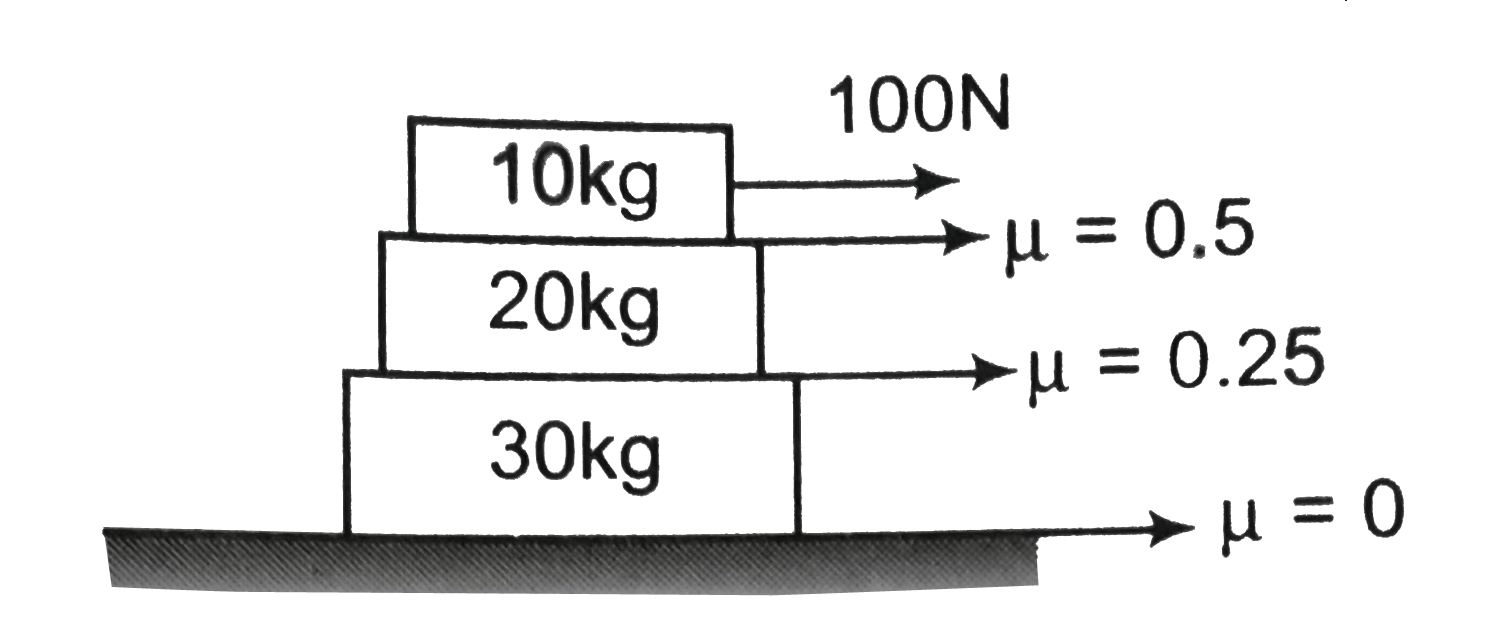
View SolutionTwo block of masses `m1` and `m2` are connected with a massless unstretched spring and placed over a plank moving with an acceleration `'a'` as shown in figure. The coefficient of friction between the blocks and platform is `mu`

View SolutionTwo thin roads are moving perpendicularly as shown in the figure. If the friction acting between them is `F_(R )` then the unit vector in the direction of friction force acting on the rod lying along x-axis is
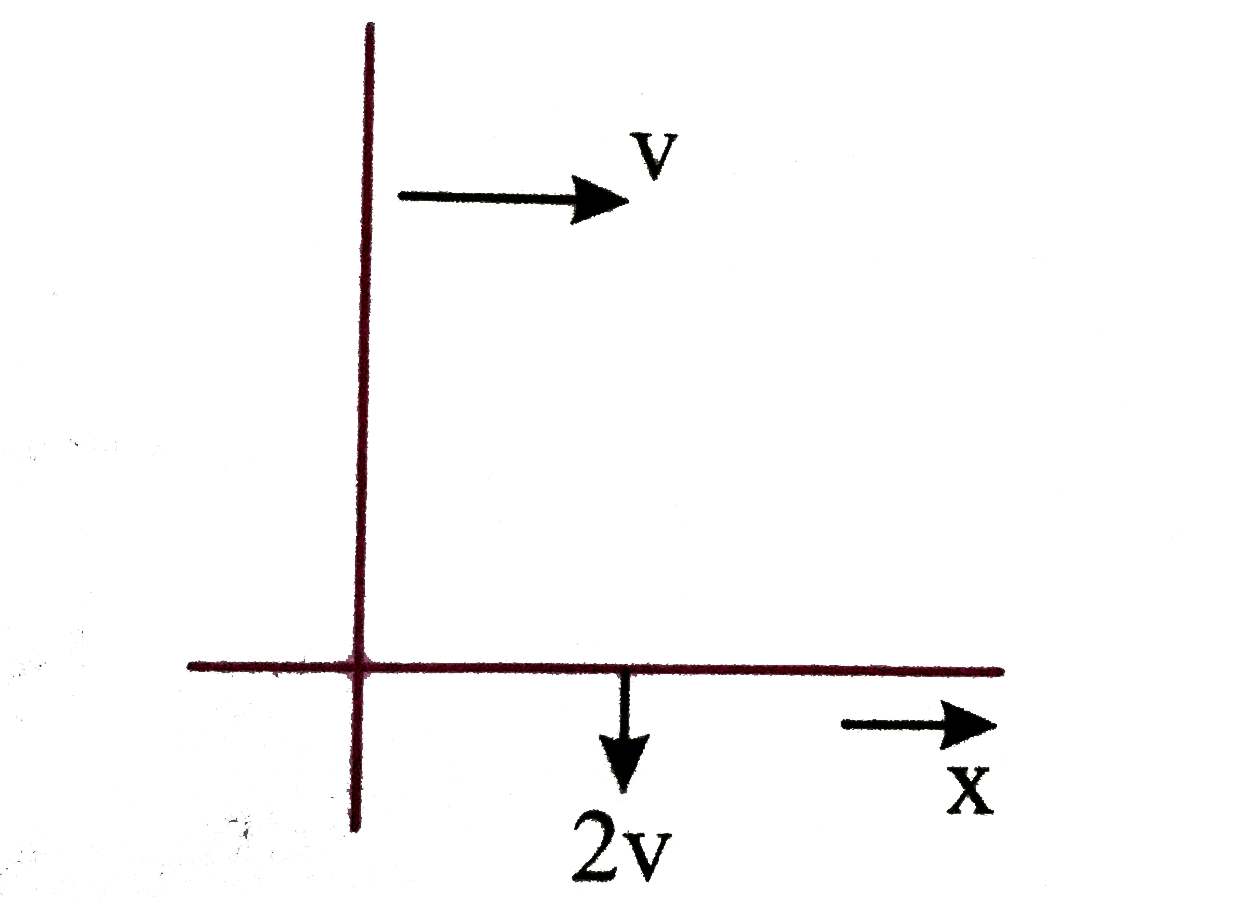
View SolutionWedge is fixed on horizontal surface. Block `A` is pulled upward by applying a force `F` as shown in figure and there is no friction between the wedge and the block `A` while coefficient of friction between `A` and `B` is `mu`. If there is no relative motion between the block `A` and `B` then frictional force developed between `A` and `B` is
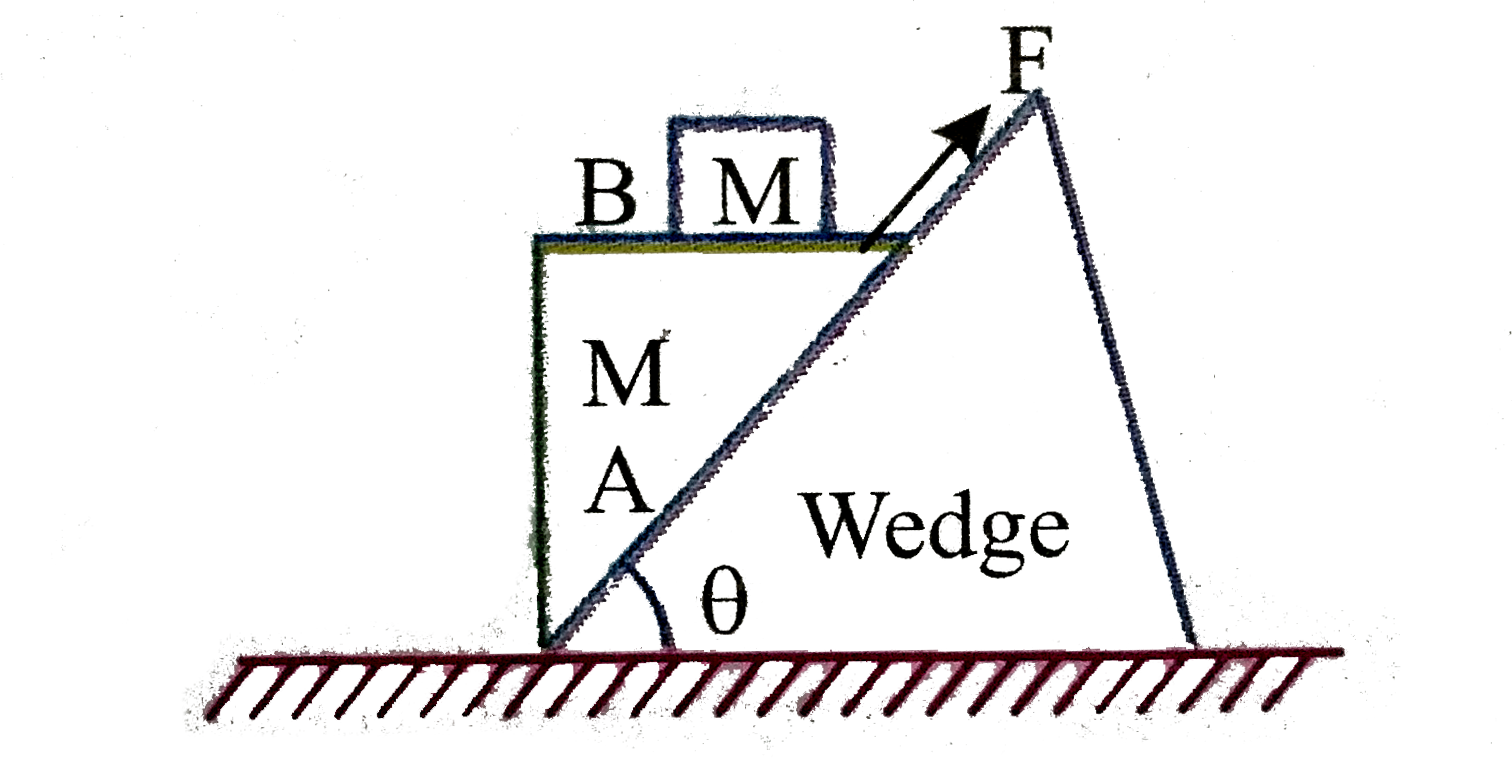
View SolutionTwo blocks `A & B` attached to each other by a mass-less spring, are kept on a rough horizontal surface `mu=0.1`. A constant force `F=200 N` is applied on blcok `B` horizon tally as shown below. If a some instant the acceleration of `10 kg` mass is `12 m//s^(2)`, then the acceleration of `20 kg` mass is

View SolutionIn the shown arrangement if `f_(1),f_(2)` and `T` be the frictional forces on `2 kg` block, `3 kg` block & tension in the string respectively, then their values are:

View SolutionChain of mass `M` length `L` kept on rough sphere. `mu` is coefficient of friction between sphere and chain `F` is minimum force required to slide chain
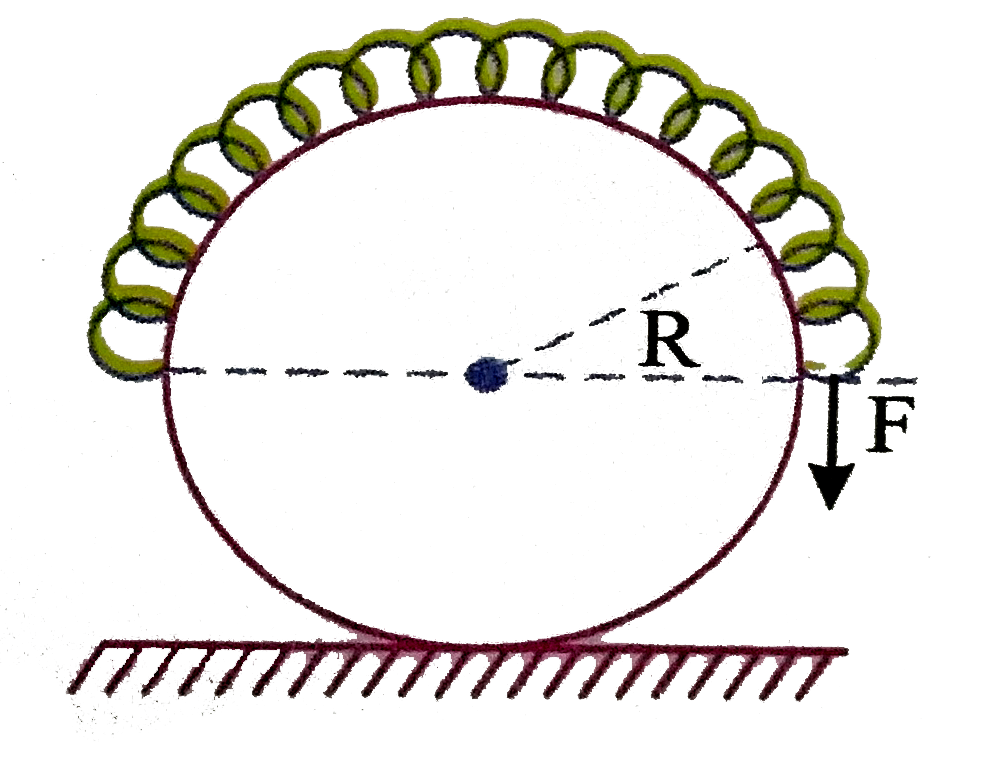
View SolutionA long chain of mass of mass `M` length `L` is being pulled with constant velocity on a rough incline with coefficient of friction `mu`. What rate frictional force on chain is increasing
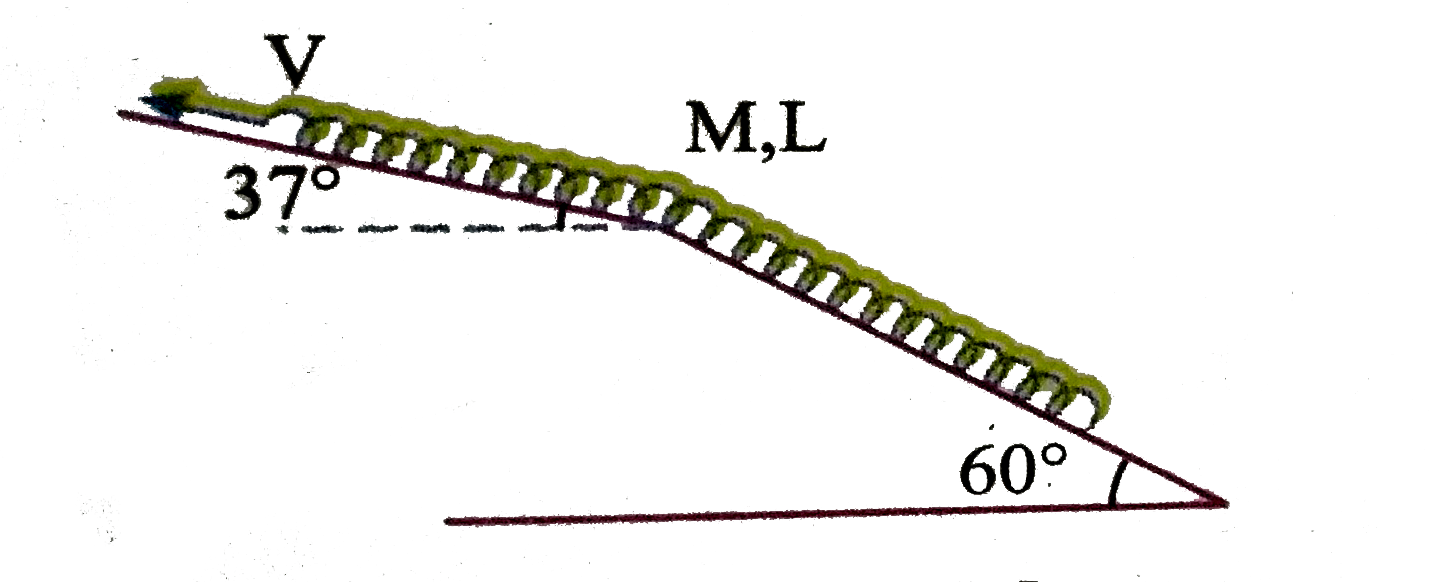
View SolutionA block A is placed over a long rough plank B same mass as shown below. The plank is placed over a smooth horizontal surface. At time `t = 0`, block A is given a velocity `v_(0)` in horizontal direction. Let `v_(1)` and `v_(2)` be the velocity of A & B at time 't'. Then choose the correct graph between `v_(1)` or `v_(2)` and t.
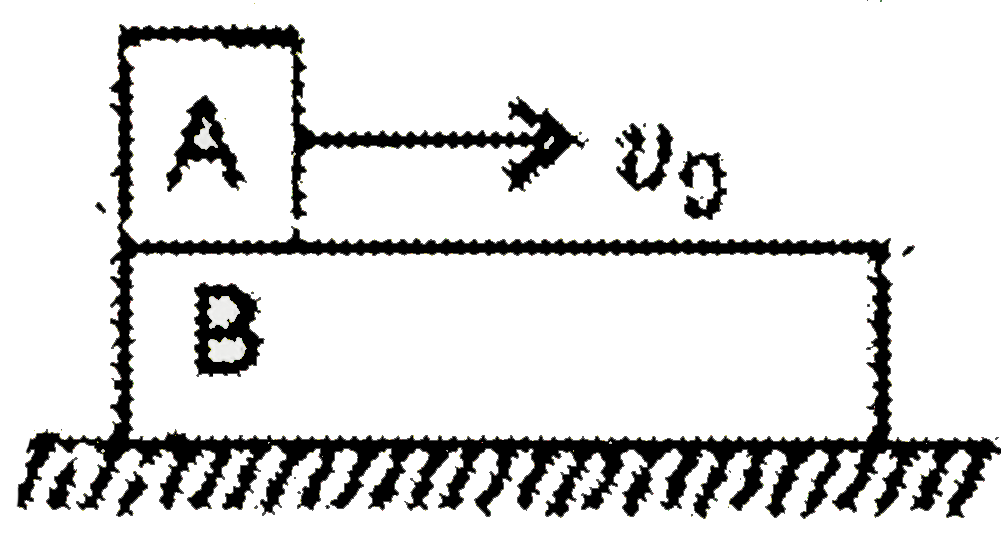
View SolutionA composite inclined plane has three different inclined surfaces `AB, BC` and `CD` of heights `1 m` each and coefficients of friction `(1)/(sqrt(3)), (1)/(sqrt(8))` and `(1)/(sqrt(15))` respectively. A particle given an initial velocity at `A` along `AB` transverses the inclined surfaces with uniform speed, reaches `D` in `5s`. The initial speed given is `("in" m//s)`
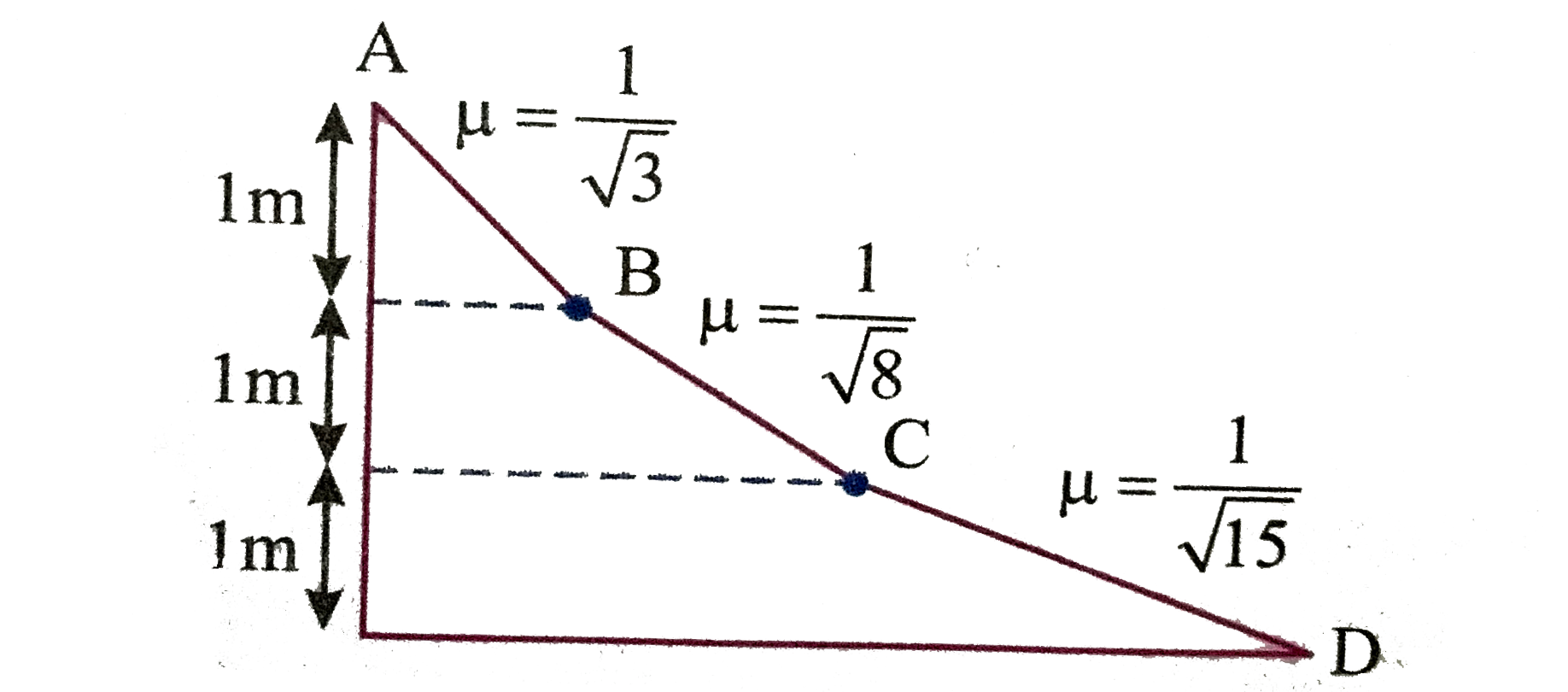
View SolutionA bead of mass m is fitted on to a rod and can move on it without friction. At the initial moment the bead is in the middle of the rod. The rod moves translationally in a horizontal plane with an acceleration a in a direction forming an angle `alpha` with the rod. Find the acceleration of the bead relative to the rod.
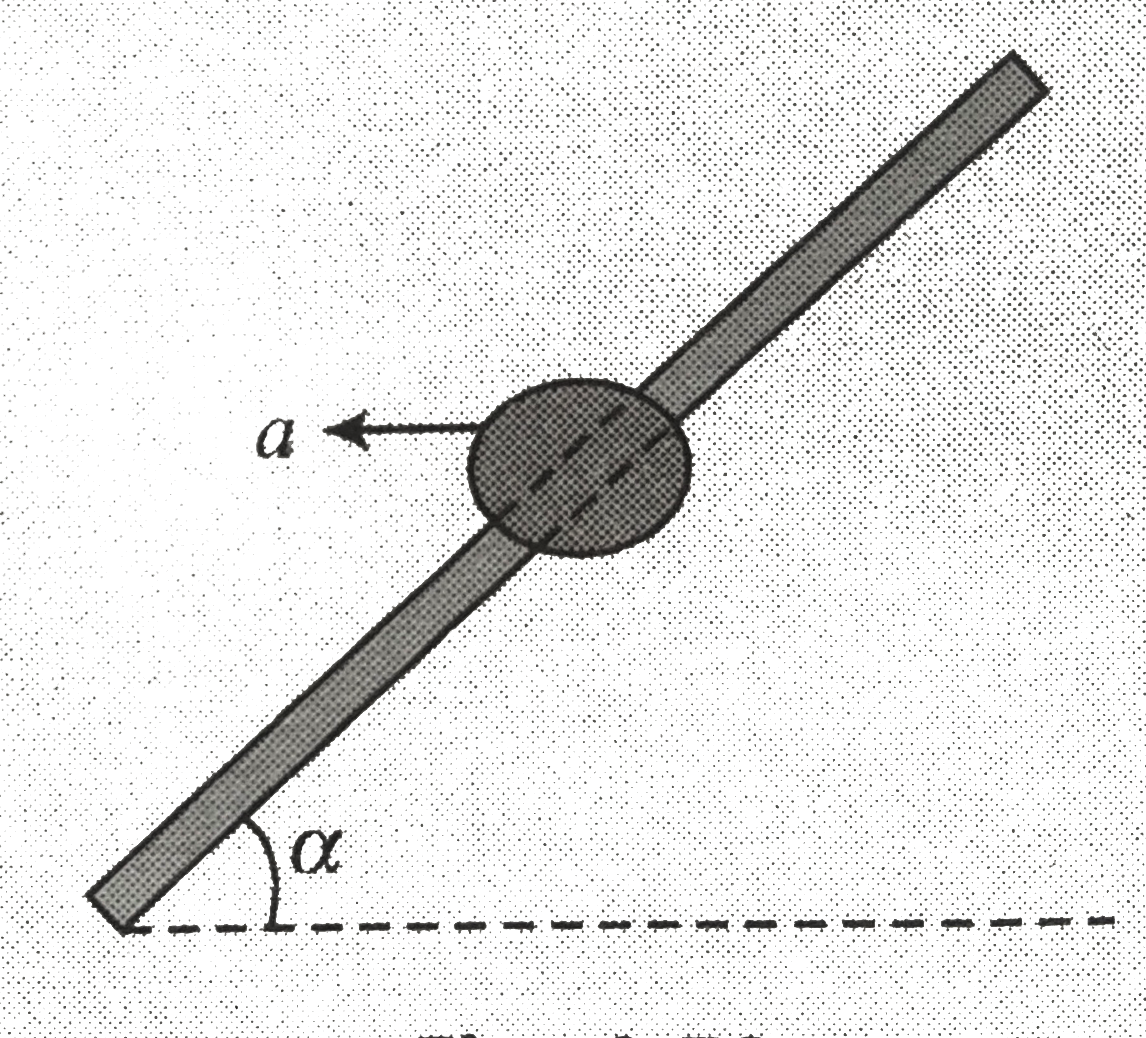
View SolutionThe figure shows th velocity and acceleration of a point like body at the initial moment of its motion. The acceleration vector of the body remain constant. The minimum radius of curvature of trajectory of the body is

View SolutionA stone is thrown horizontally with a velocity of `10m//sec`. Find the radius of curvature of it’s trajectory at the end of `3 s` after motion began. `(g=10m//s^(2))`
View SolutionA small coin of mass `80g` is placed on the horizontal surface of a rotating disc. The disc starts from rest and is given a constant angular acceleration `alpha=2rad//s^(2)`. The coefficient of static friction between the coin and the disc is `mu_(s)=3//4` and cofficient of kinetic friction is `mu_(k)=0.5`. The coin is placed at a distance `r=1m` from the centre of the disc. The magnitude of the resultant force on the coin exerted by the disc just before it starts slipping on the disc is
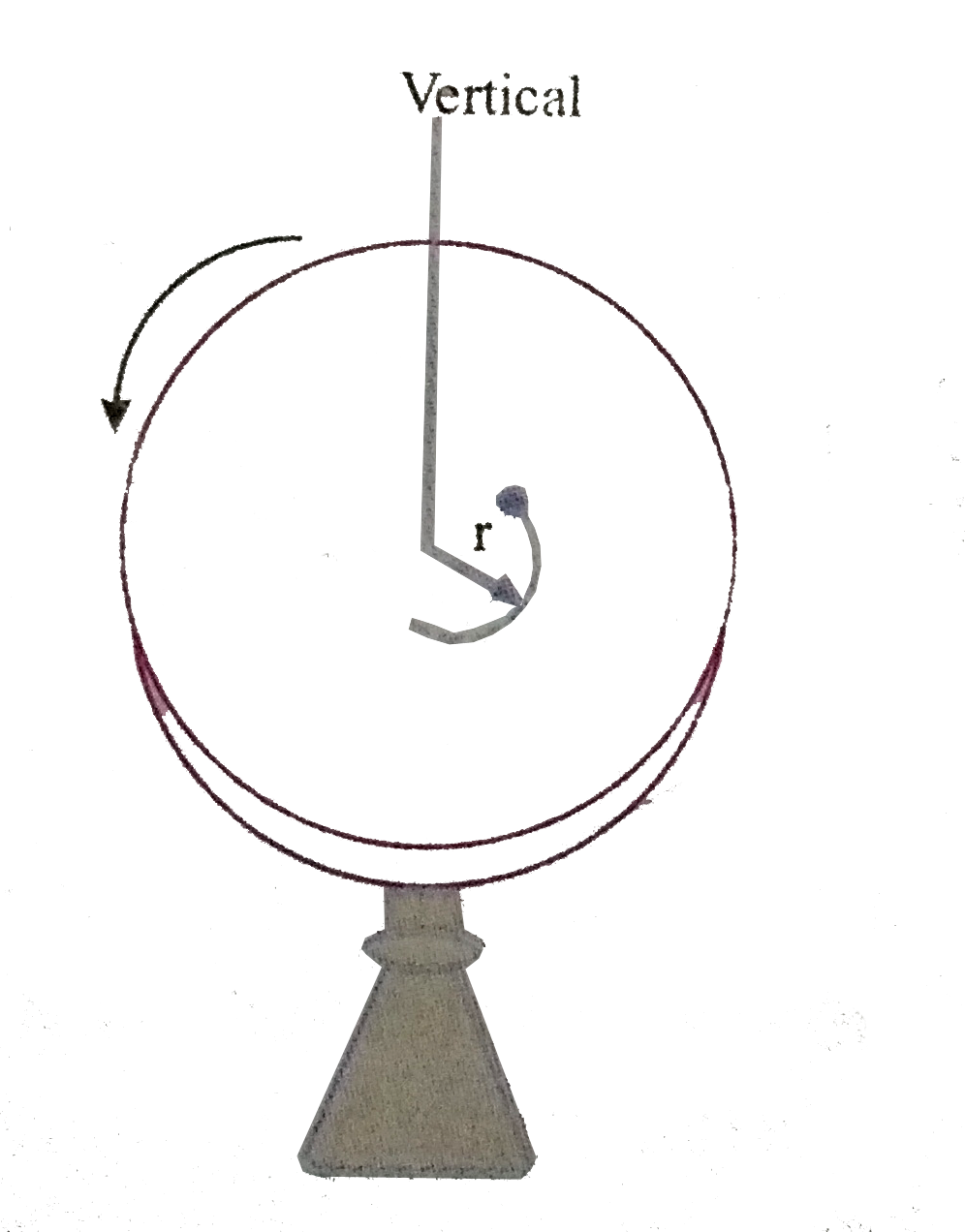
View SolutionTwo partical tied to different strings are whirled in a horizontal circle as shown in figure. The ratio of lengths of the string so that they complete their circular path with equal time priod is:
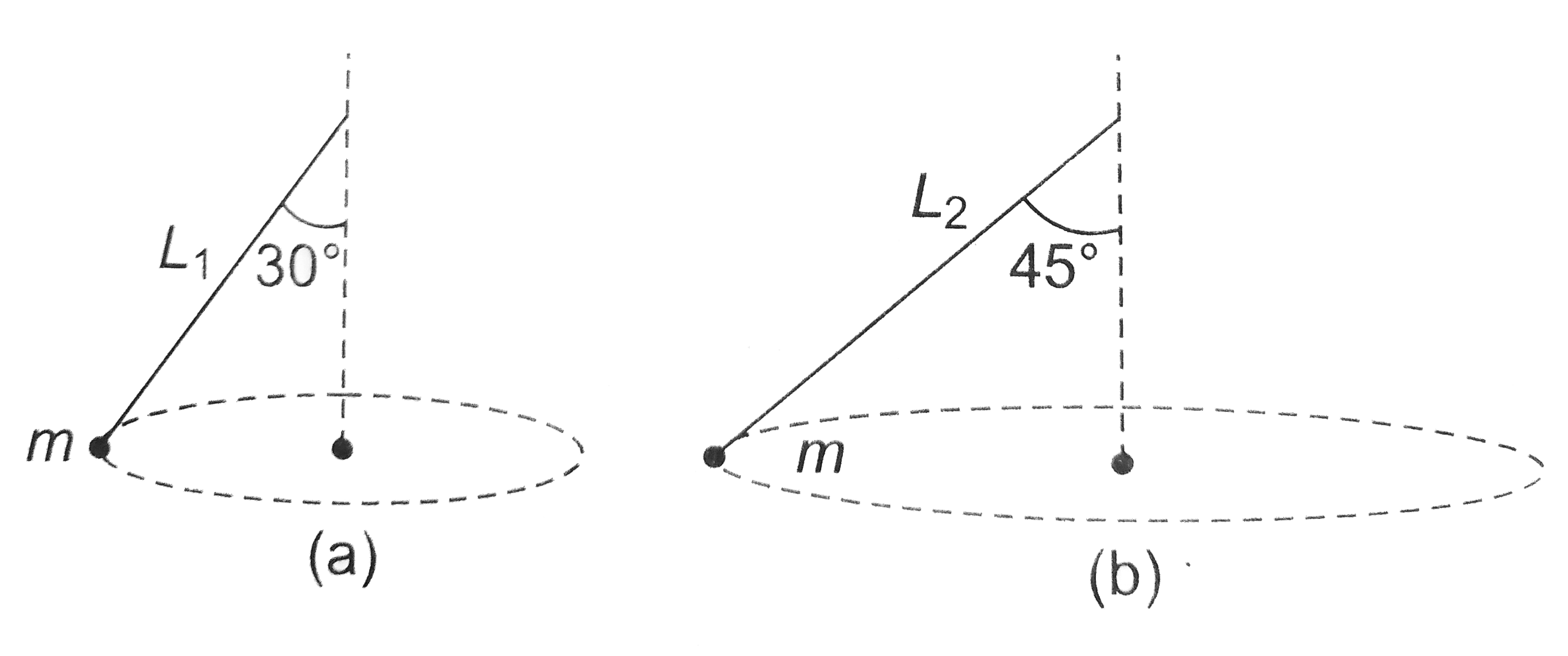
View SolutionA particle moves in a circle of radius 4.0 cm clockwise at constant speed of `2 ms^(-1)`. If `hat(x)` and `hat(y)` are unit acceleration vectors along X-axis and Y-axis respectively (in `cms^(-2)`), find the acceleration of the particle at the instant half way between P and Q. Refer to Fig.5.14 (a).

View SolutionA small bead of mass `m` is carried by a circular hoop having center at `O` and radius `sqrt 2m` which rotates about a fixed vertical axis. The coefficient of friction between beed and hoop is `mu=0.5`. The maximum angular speed of the hoop for which the bead does not have relative motion with respect to hoop. `(g=10m//s^(2))`
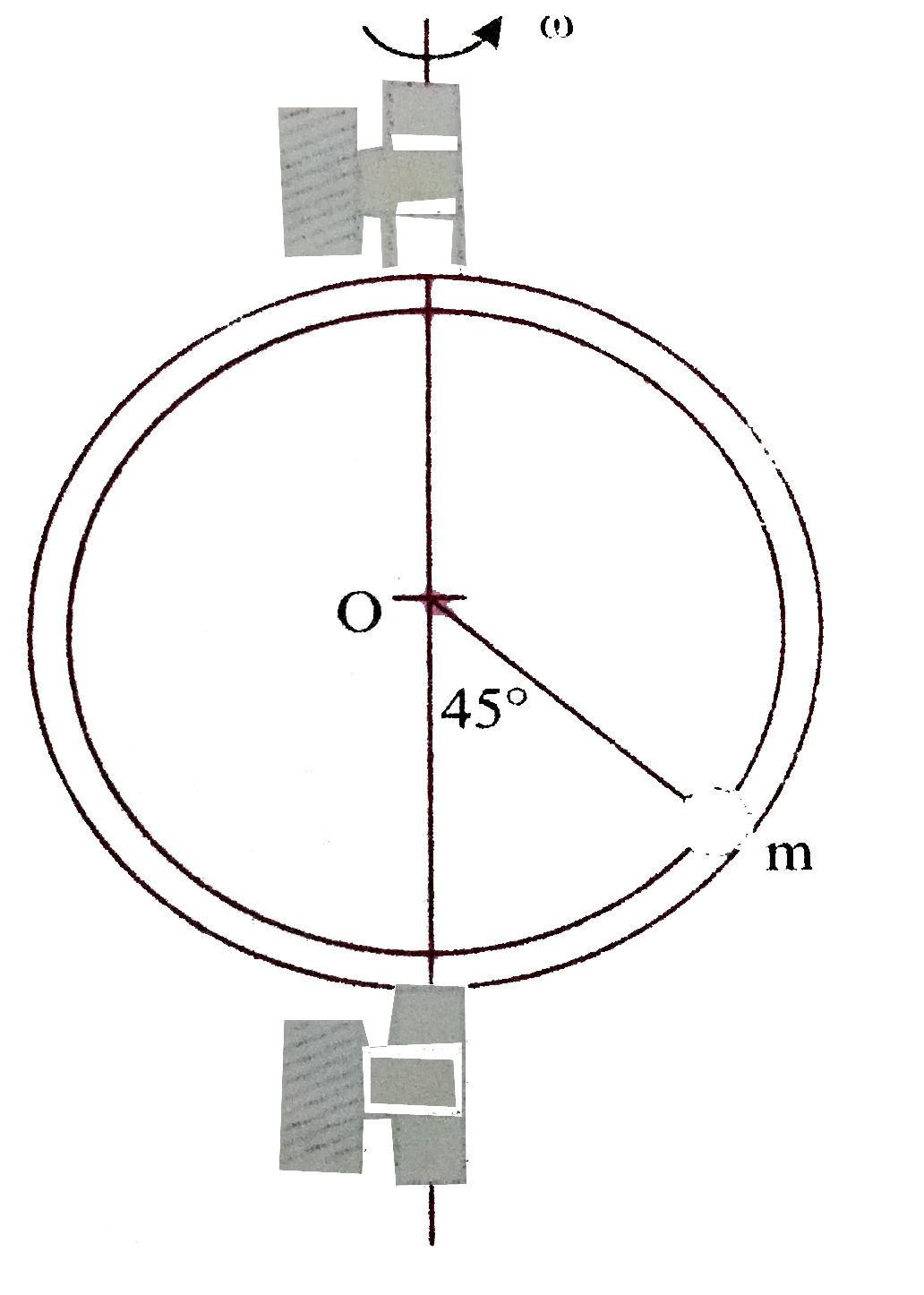
View SolutionTwo identical particle are attached at the ends of a light string which passes through a hole at the centre of a table another particle on the table is made to revolve with angular velocity `omega_(1)` . One of the particles is made to move in a horizontal circle as a conical pendulum with angular velocity `omega_(2)` . If `l_(1)` and `l_(2)` are the length of the string over and under the table , then in order that particle under the table neither moves down nor moves up the ratio `(l_(1))/(l_(2))` is :

View SolutionFor the arrangement in the Figure, the particle `M_(1)` attached to one end of string which moves on a horizantal table in a circle of radius `l/2` (where `l` is the length of the string) with constant angular speed `omega`. The other end of the string attached to to mass `M_(2)` which rest on a vertical rod. When the rod collapse, the acceleration of mass `M_(2)` at that instant

View SolutionA bead of mass m is located on a parabolic wire with its axis vertical and vertex at the origin as shown in figure and whose equations is `x^(2) = 4 ay` . The wire frame is fixed and the bead can slide on it without friction . The bead is released from the point y = 4a on the wire frame from rest . The tangential acceleration of the bead when it reaches the position given by y = a is :

View SolutionA mass 1kg attached to the end of a flexible rope of diameter `d = 0.25 m`is raised vertically by winding the rope on a reel as shown. If the reel is turned uniformly at the rate of `2r.p.s.` What is the tension in rope. The inertia of rope may be neglected.
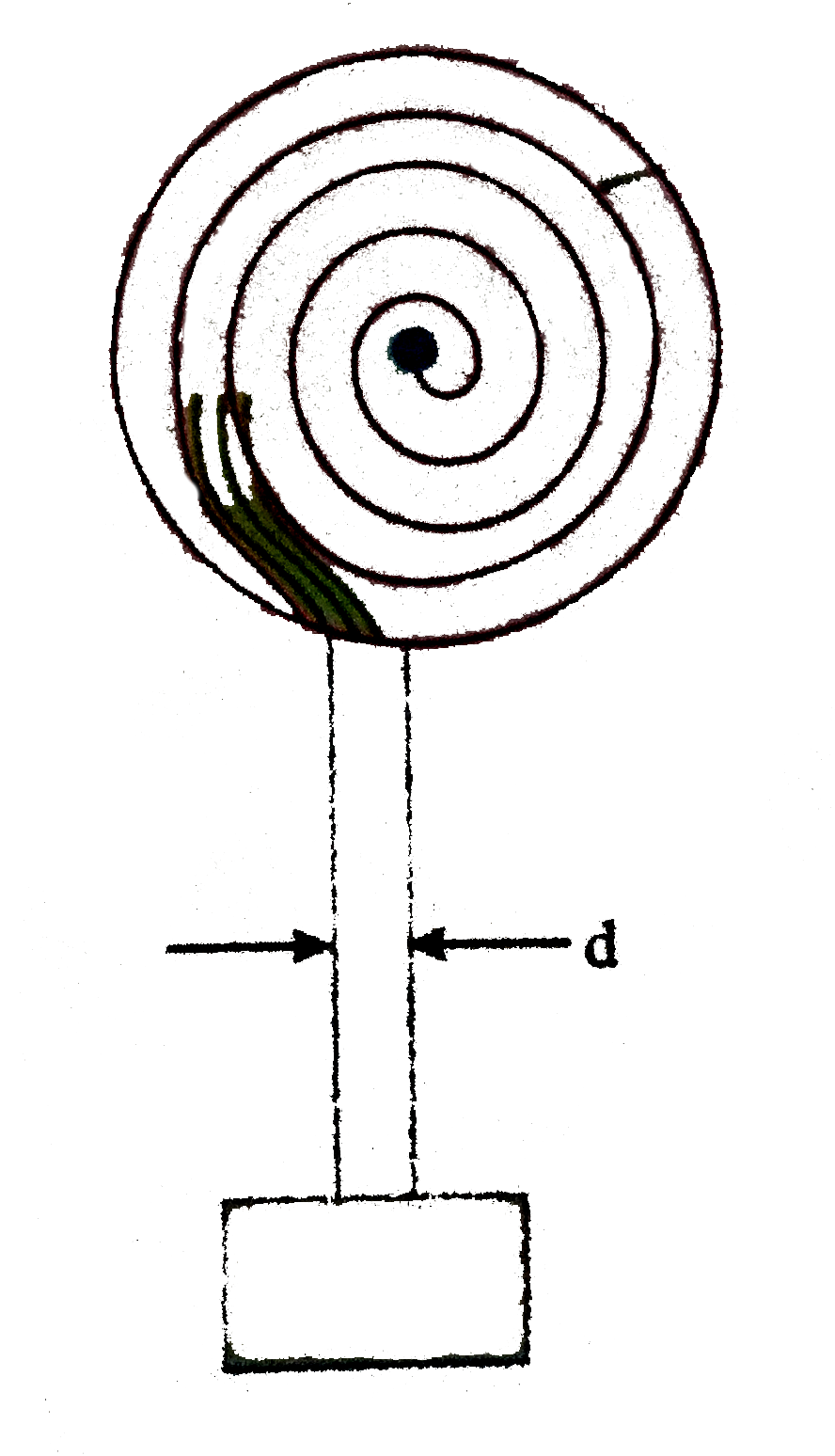
View SolutionA disc of radius `R` has a light pole fixed perpendicular to the disc at its periphery which in turn has a pendulum of length `R` attached to its other end as shown in figure. The disc is rotated with a constant angular velocity `omega` The string is making an angle `45^(@)` with the rod. Then the angular velocity `omega` of disc is
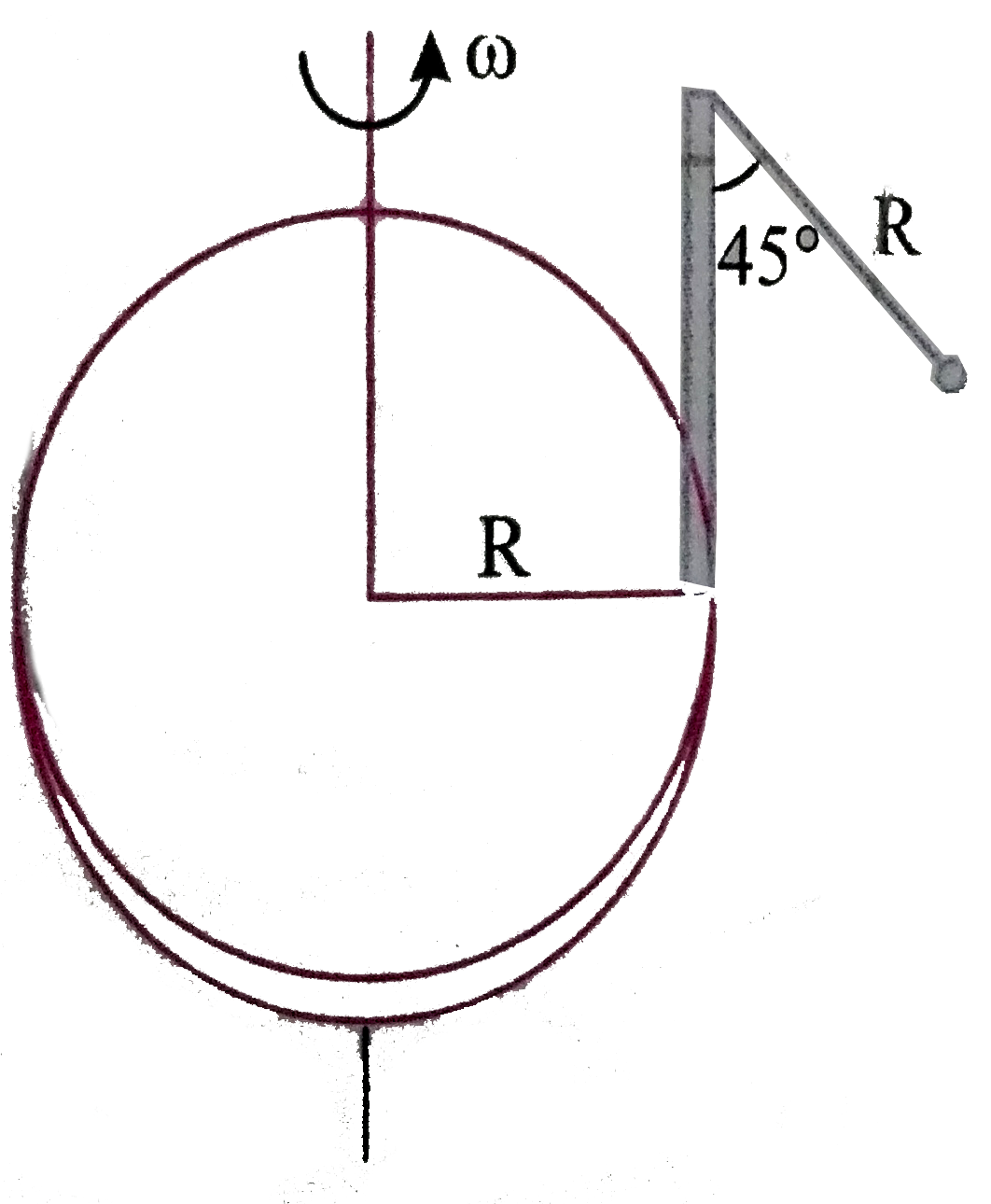
View SolutionA particle is moving in a circle of radius `R` in such a way that at any instant the normal and tangential component of the acceleration are equal. If its speed at `t=0` is `u_(0)` the time taken to complete the first revolution is
View SolutionA car is moving in a circular horizontal track of radius 10 m with a constant speed of 10 ms/s A plumb bob is suspended from the roof of the car by a light rigid rod of length 1m. The angle made by the rod with the track is (Take g= 10m/`s^(2)`
View SolutionA long horizontal rod has a bead which can slide along its length and initially placed at a
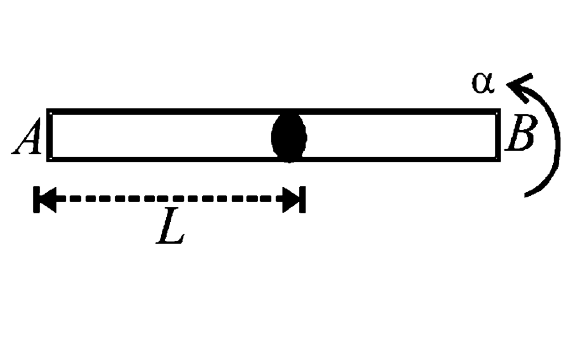
distance L from one end A of the rod. The rod is set in angular motion about A with constant angular acceleration `alpha.` if the coefficient of friction between the rod and the bead is `mu`, and gravity is neglected, then the time after which the bead starts slipping is
View SolutionA particle `'P'` is moving on a circular path under the action of only one force action always toward the fixed point `'O'` on the circumference. Find the ratio of `(d^(2)theta)/(dt^(2))` & `(("d"theta)/(dt))^(2)`

View SolutionIn Fig. 7.149 , coefficient of friction between the block and the floor is `mu` . Force F that will move the block on the floor with a uniform speed is :

View SolutionIn Q.48 , the block can be made to slide on the floor only if `theta` is more than a minimum value . Otherwise , the block cannot be made to slide by any value of F however large . Minimum value of `theta` for less than which sliding cannot happen , is :
View SolutionTo avoid slipping while walking on ice, one should take smaller steps because of the
View SolutionA block of mass M slides down a rough inclined surface of inclination `theta` and reaches the bottom at speed at 'v' . However , if it slides down a smooth inclined surface of same length and same inclination , it reaches the bottom with the speed kv. Coefficient of friction between the block and the rough incline is :
View SolutionIn Fig. 7.150 , coefficient of friction between `m_(2)` and the horizontal surface is `mu` , minimum value of m so that the system has zero acceleration , is :

View SolutionIn Fig . 7.151 , coefficient of kinetic friction between the 4 kg block and the inclined surface is `(1)/(sqrt3)` . Here 'm' is such a mass that the 4 kg block is moving up the plane with a constant speed , then m is :

View SolutionA uniform rope of length l lies on a table . If the coefficient of friction is `mu` , then the maximum length `l_(1)` of the part of this rope which can overhang from the edge of the table without sliding down is :
View SolutionTwo balls of masses `m_(1)` and `m_(2)` are separated from each other by a powder charge placed between them. The whole system is at rest on the ground. Suddenly the powder charge explodes and masses are pushed apart. The mass `m_(1)` travels a distance `s_(1)` and stops. If the coefficients of friction between the balls and ground are same, the mass `m_(2)` stops after travelling the distance
View SolutionThe coefficient of static friction, `mu_(s)` between block A of mass 2 kg and the table as shown in the figure is 0.2. What would be the maximum mass value of block B so that the two blocks do not move? The string and the pulley are assumed to be smooth and massless.`(g=10m//s^(2))`
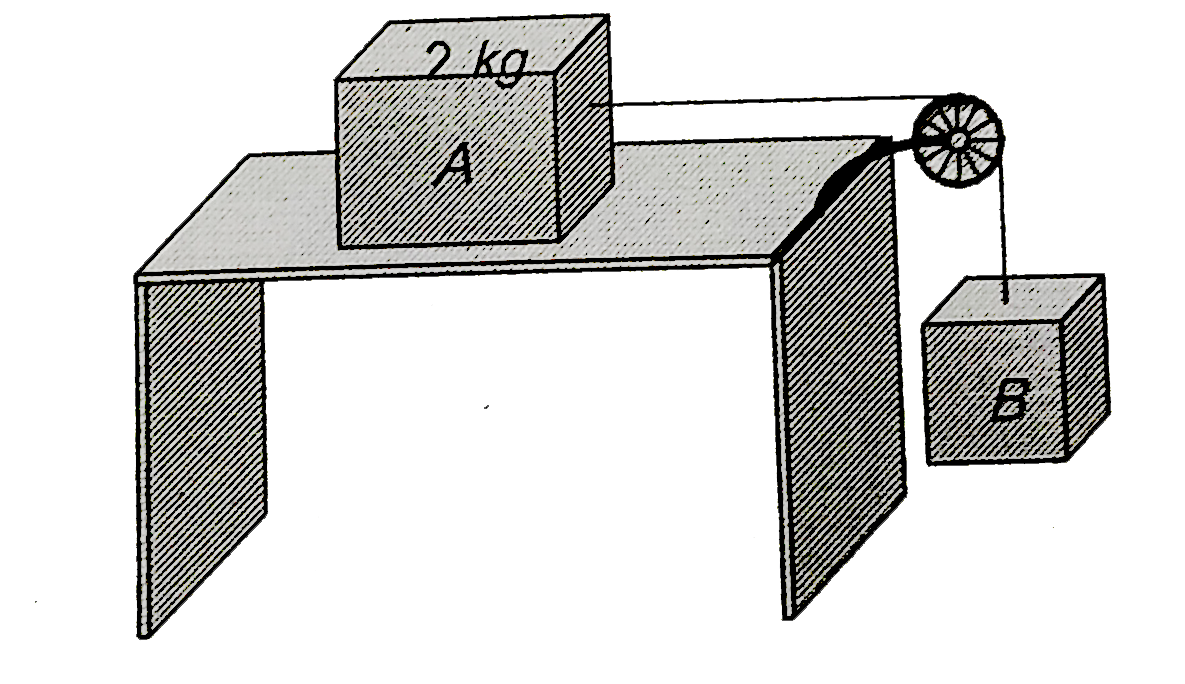
View SolutionThe minimum force required to start pushing a body up a rough (frictional coefficient `mu`) inclined plane is `F_(1)` while the minimum force needed to prevent it from sliding down is `F_(2)`. If the inclined plane makes an angle `theta` with the horizontal such that `tan theta =2mu` then the ratio `(F_(1))/(F_(2))` is .
View SolutionA bar of mass `m_(1)` is placed on a plank of mass `m_(2)` which rests on a smooth horizontal plane . The coefficient of friction between the surfaces of bar and plank is k . The plank is subjected to a horizontal force F depending on time t as F = at , where a is a constant . The moment of time `t_(0)` at which the plank starts sliding is :

View SolutionIn the given Fig. 7.154 , two masses 2 kg each are attached to a string which passes over a smooth massless pulley P . The surface PQ is smooth and `anglePQR = 45^(@)` . The surface PR is rough , with coefficient of kinetic friction `(1)/(sqrt3)` and `anglePRQ = 30^(@)` .The acceleration of the system is :

View SolutionA block lying on a long horizontal conveyer belt moving at a constant velocity receives a velocity `v_(0) = 5m//s` relative to the ground in the direction opposite to the direction of motion of the conveyer. After `t = 4s`, the velocity of the block becomes equal to the velocity of the belt. The coefficient of friction between the block and the belt is `mu = 0.2`. Determine the velocity v of the conveyer belt.
View SolutionA particle of weight W rests on a rough inclined plane which makes an angle `alpha` with the horizontal . If the coefficient of static friction `mu = 2 "tan" alpha` , find the horizontal force H acting transverse to the slope of the plane when the particle is about to slip :

View SolutionA cart of mass M has a block of mass m in contact with it as shown in the figure-2.133. The coefficient of friction between the block and the cart is `mu`. What is the minimum acceleration of the cart so that the block m does not fall ?
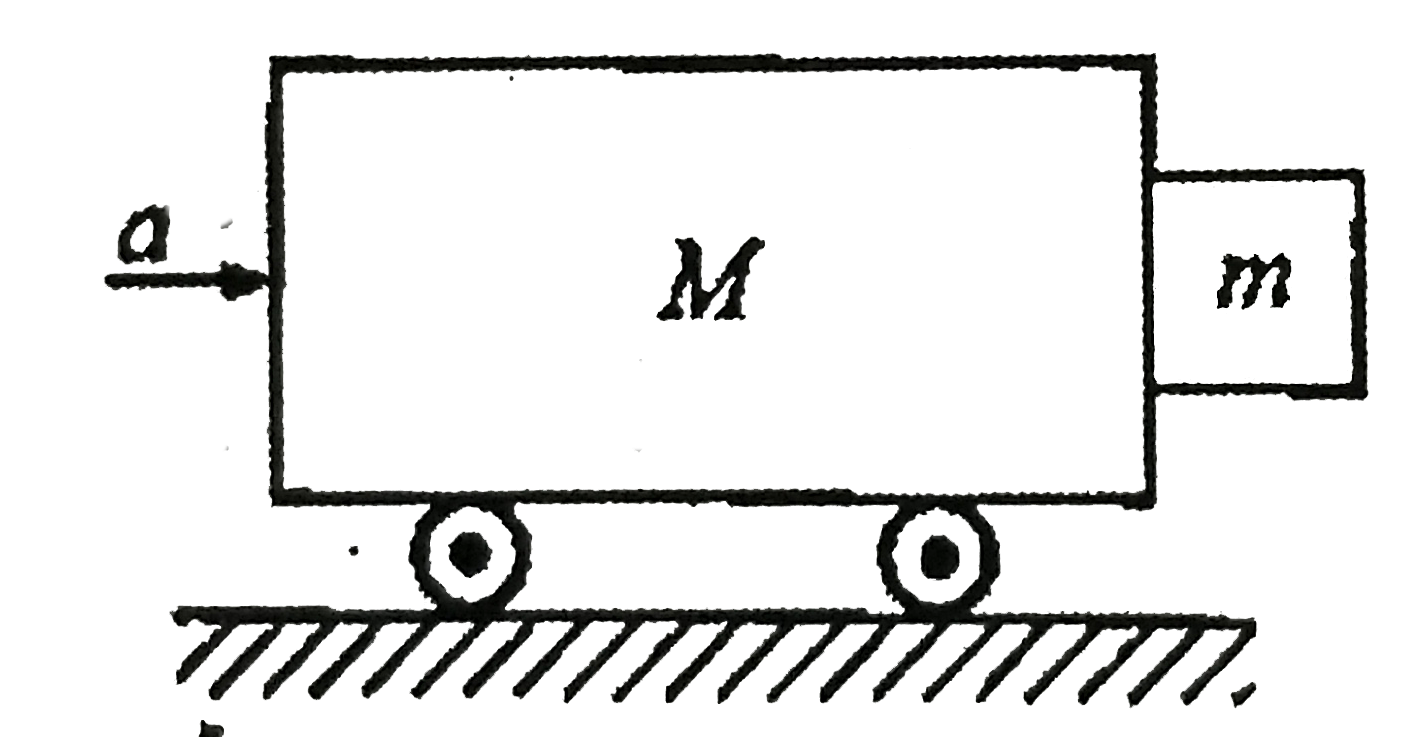
View SolutionA block is placed on a rough floor and a horizontal force F is applied on it.The force of friction f by the floor on the block is measured for different values of F and a graph is plotted between them.
View SolutionIf the coefficient of friction between an insect and bowl is `mu` and the radius of the bowl is r, find the maximum height to which the insect can crawl in the bowl.
View SolutionA block rests on a rough inclined plane making an angle of `30^(@)` with horizontal. The coefficient of static friction between the block and inclined plane is `0.8` . If the frictional force on the block is `10 N`, the mass of the block in `kg` is `(g = 10 m//s^(2))`
View SolutionThe upper half of an inclined plane with inclination `phi` is perfectly smooth while the lower half is rough. A body starting from rest at the top will again come to rest at the bottom if the coefficient of friction for the lower half is given by
View SolutionA block `B` is pushed momentarily along a horizontal surface with an initial velocity `v` . If `mu` is the coefficient of sliding friction between `B` and the surface, block `B` will come to rest after a time:

View SolutionA rectangular block of mass 5 kg is kept on a horizontal surface . The coefficient of friction between the block and the surface is `0.2` . If a force of 20 N is applied to the block at angle of `30^(@)` with the horizontal plane , what is the force of friction on the block ? (Take g = `10 m//s^(2)`)
View SolutionIn the arrangement shown in figure , there is friction between the blocks of masses m and 2m which are in contact . The ground is smooth . The mass of the suspended block is m . The block of mass m which is kept on mass 2m is stationary with respect to block of mass 2 m . The force of friction between m and 2 m is (pulleys and string are lig frictionless ) :

View SolutionA block of mass M = 4 kg is kept on a smooth horizontal plane. A bar of mass m = 1 kg is kept on it. They are connected to a spring as shown & the spring is compressed. Then what is the maximum compression in the spring for which the bar will not slip on the block when released if coefficient of friction between them is 0.2 & spring constant = 1000 N/m : (Take `g=10m//s^(2)`)

View SolutionIf the mass of block is 1 kg and a force of 10 / `sqrt3` N is applied horizontally on the block as shown in the figure . The frictional force acting on the block is :

View SolutionTwo blocks of equal mass 2 kg are placed on a rough horizontally surfaces as shown and a force F is applied on the upper block . The system is initially at rest . Find acceleration of the lower block in `m// s^(2)` .

View SolutionA side view of a simplified form of vertical latch B is as shown . The lower member A can be pushed forward in its horizontal channel . The sides of the channels are smooth , but at the interfaces of A and B , which are at `45^(@)` with the horizontal , there exists a static coefficient of friction `mu = 0.4` . what is the minimum force F ( in N) that must be applied horizontally to A to start motion of the latch B upwards if it has a mass m = 0.6 kg ?

View SolutionA block of weight 5 N is pushed against a vertical wall by a force 12 N . The coefficient of friction between the wall and block is `0.6` . Find the magnitude of the force exerted by the wall on the block :

View SolutionAn insect crawls up a hemispherical surface very slowly (see the figure). The coefficient of friction between the insect and the surface is 1/3. If the line joining the centre of the hemispherical surface to the insect makes an angle `alpha` with the vertical, the maximum possible value of `alpha` is given by

View SolutionWhat is the maximum value of the force F such that the block shown in Fig. 7. 165. does not move ?

View SolutionA block of mass 'm' is held stationary against a rough wall by applying a force F as shown. Which one of the following statement is incorrect ?
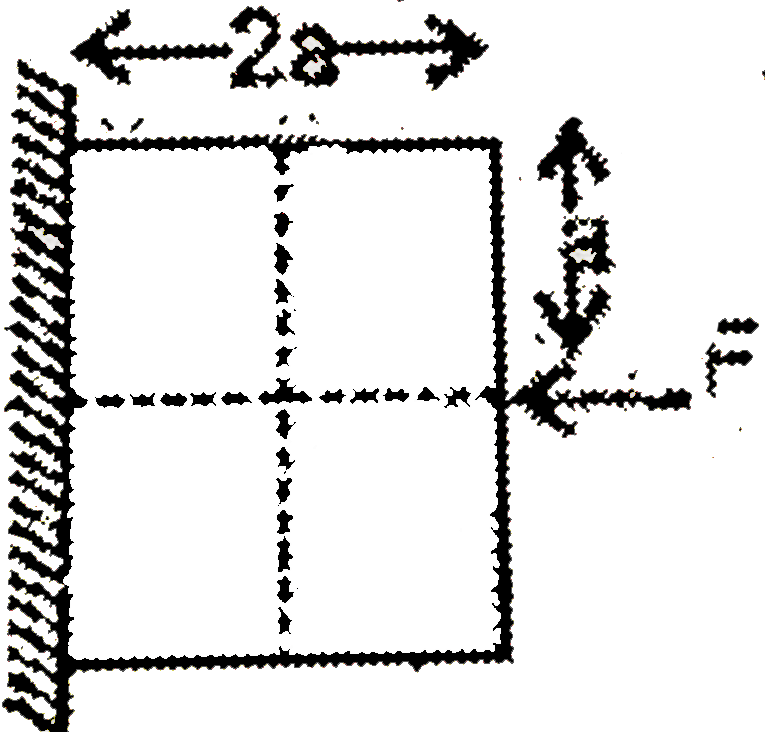
View SolutionA block of mass m is on an inclined plane of angle `theta`. The coefficient of friction between the block and the plane is `mu` and `tanthetagtmu`. The block is held stationary by applying a force P parallel to the plane. The direction of force pointing up the plane is taken to be positive. As P is varied from `P_1=mg(sintheta-mucostheta)` to `P_2=mg(sintheta+mucostheta)`, the frictional force f versus P graph will look like
View SolutionA ball of mass `(m) 0.5 kg` is attached to the end of a string having length `(L) 0.5 m`. The ball is rotated on a horizontal circular path about vertical axis. The maximum tension that the string can bear is `324 N`. The maximum possible value of angular velocity of ball (in radian//s) is -
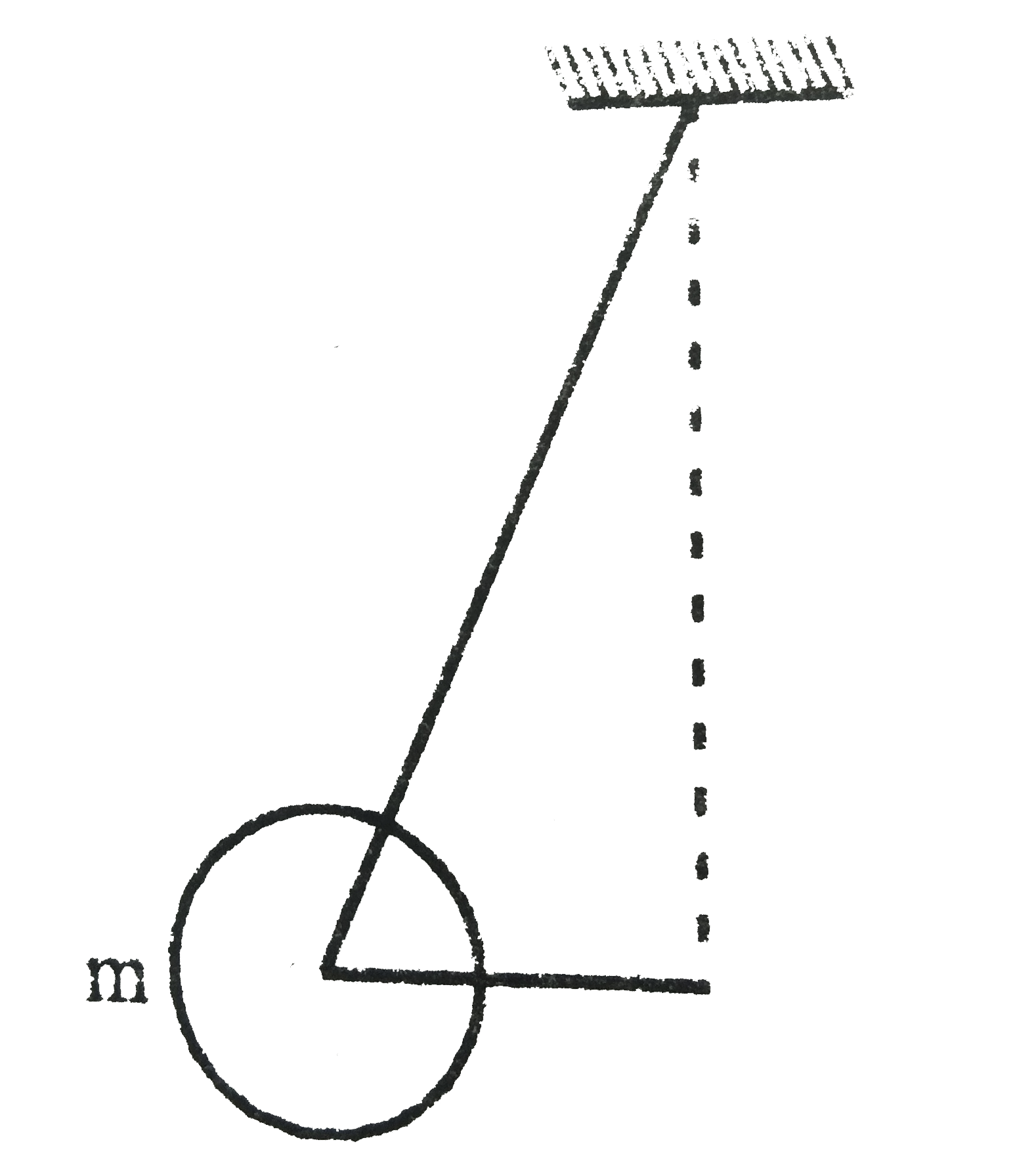 .
.
View SolutionA block of mass `m_(1)` = 1 kg and another mass `m_(2) = 2` kg are placed together ( see figure) on an inclined plane with angle of inclination `theta` . Various values of `theta` are given in List I . The coefficient of friction between the block `m_(1)` and the plane is always zero. The coefficient of static and dynamic friction between the block `m_(2)` and the plane are equal to `mu = 0.3` . In List II expressions for the friction on the block `m_(2)` are given . Match the correct expression of the friction in List II with the angles given in List I , and choose the option . The acceleration due to gravity is denoted by g .
[Useful information : tan `( 5. 5^(@))` = 0.1 , tan `(11. 5^(@))` = 0.2 , tan `(16.5 ^(@)) = 0.3`]
`{:(,"List" I ,, "List" II), (P. , theta = 5^(@) , 1., m_(2)g sin theta ) , (Q. , theta = 10^(@) , 2., (m_(1) + m_(2))g sin theta), (R., theta = 15^(@) , 3., mu m_(2)g cos theta), (S., theta = 20^(@) , 4., mu (m_(1) + m_(2))g cos theta):}`

View Solution
OBJECTIVE QUESTIONS ( only one choice is correct ) questions and complete solutions for chapter FRICTION AND CIRCULAR MOTION of GR BATHLA & SONS PHYSICS (HINGLISH) of Class 11